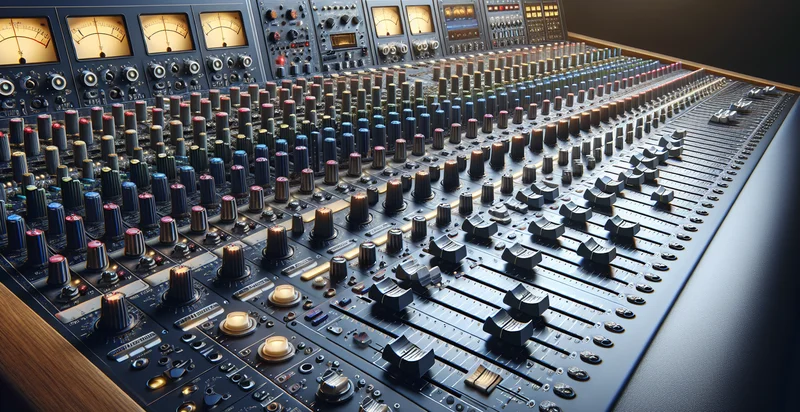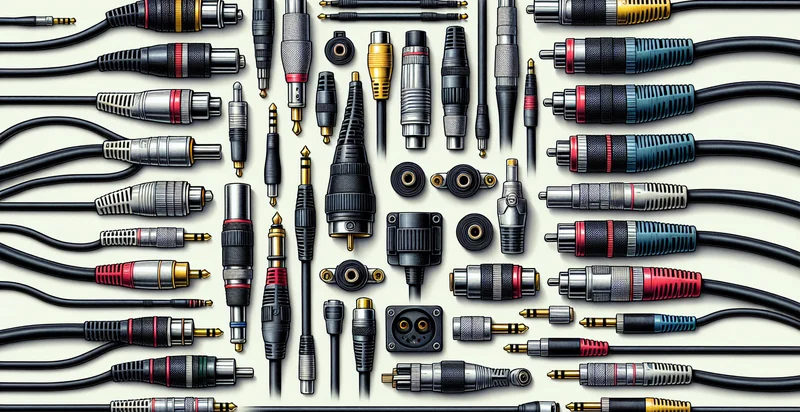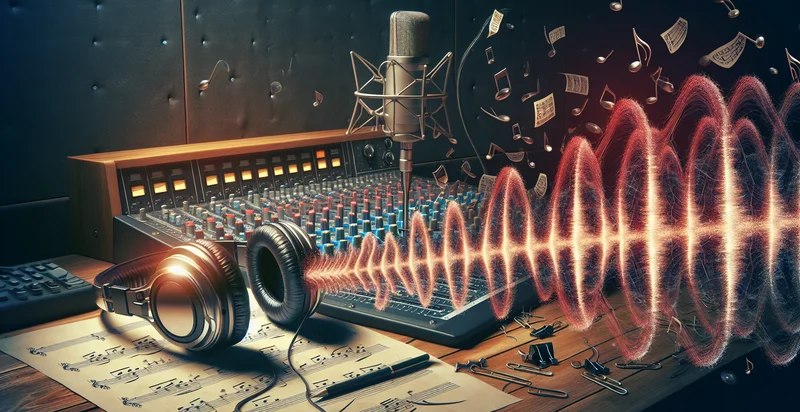Identify audio mixing balance
using AI
Below is a free classifier to identify audio mixing balance. Just input your text, and our AI will predict the ideal audio mixing balance for various audio tracks. - in just seconds.

Contact us for API access
Or, use Nyckel to build highly-accurate custom classifiers in just minutes. No PhD required.
Get started
import nyckel
credentials = nyckel.Credentials("YOUR_CLIENT_ID", "YOUR_CLIENT_SECRET")
nyckel.invoke("audio-mixing-balance", "your_text_here", credentials)
fetch('https://www.nyckel.com/v1/functions/audio-mixing-balance/invoke', {
method: 'POST',
headers: {
'Authorization': 'Bearer ' + 'YOUR_BEARER_TOKEN',
'Content-Type': 'application/json',
},
body: JSON.stringify(
{"data": "your_text_here"}
)
})
.then(response => response.json())
.then(data => console.log(data));
curl -X POST \
-H "Content-Type: application/json" \
-H "Authorization: Bearer YOUR_BEARER_TOKEN" \
-d '{"data": "your_text_here"}' \
https://www.nyckel.com/v1/functions/audio-mixing-balance/invoke
How this classifier works
To start, input the text that you'd like analyzed. Our AI tool will then predict the ideal audio mixing balance for various audio tracks..
This pretrained text model uses a Nyckel-created dataset and has 21 labels, including Acoustic Focused, Ambient Sound, Balanced, Bass Heavy, Drums Heavy, Dynamic Range Heavy, Effects Heavy, Guitar Heavy, High End Focused and Instrumental Heavy.
We'll also show a confidence score (the higher the number, the more confident the AI model is around the ideal audio mixing balance for various audio tracks.).
Whether you're just curious or building audio mixing balance detection into your application, we hope our classifier proves helpful.
Related Classifiers
Need to identify audio mixing balance at scale?
Get API or Zapier access to this classifier for free. It's perfect for:
- Podcast Quality Control: The 'audio mixing balance' identifier can be employed by podcast producers to ensure consistent audio quality across episodes. By evaluating elements like volume levels, equalization, and dynamics, producers can maintain a professional sound and enhance listener experience.
- Music Production Optimization: Recording studios can utilize this identifier to automatically assess and tweak mix balance during music production. This helps sound engineers to refine tracks by identifying imbalances in instrumentation and vocal levels, leading to a polished final product.
- Video Production Post-Editing: Film and video editors can apply the identifier to balance audio tracks during the post-production phase. Ensuring that background scores, dialogues, and sound effects are harmonized will improve overall viewer engagement and immersion.
- Accessibility Enhancement: Organizations focused on inclusivity can implement the identifier for creating balanced audio products for the hearing impaired. By optimizing mix levels, they can enhance the clarity of important audio cues without overwhelming sounds.
- Live Sound Engineering: In live event settings, sound engineers can quickly assess audio balance using the identifier during performances. This real-time feedback enables immediate adjustments to mics and instruments, ensuring a superior auditory experience for the audience.
- AI-Assisted Audio Editing Tools: Developers of audio editing software can integrate the identifier into their platforms, offering users intelligent suggestions for mix balance. This feature can streamline the editing process, reducing the time spent on adjustments while enhancing overall sound quality.
- Music Streaming Services Quality Assurance: Streaming platforms can leverage the identifier to evaluate the mix balance of tracks being uploaded by artists. By ensuring a consistent sound level across various content, they can maintain high audio standards and improve user satisfaction.


